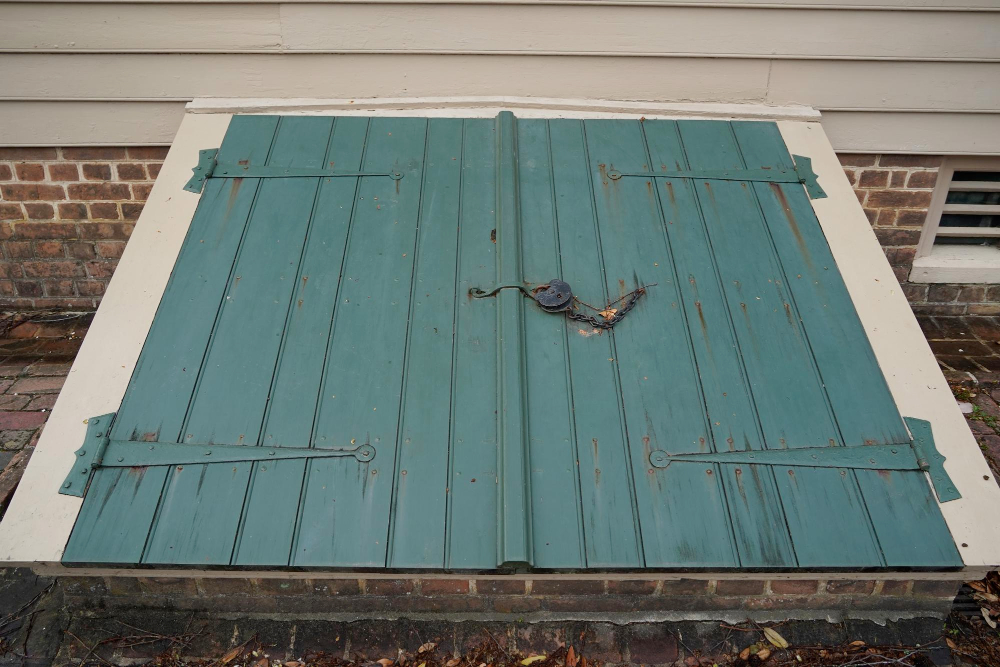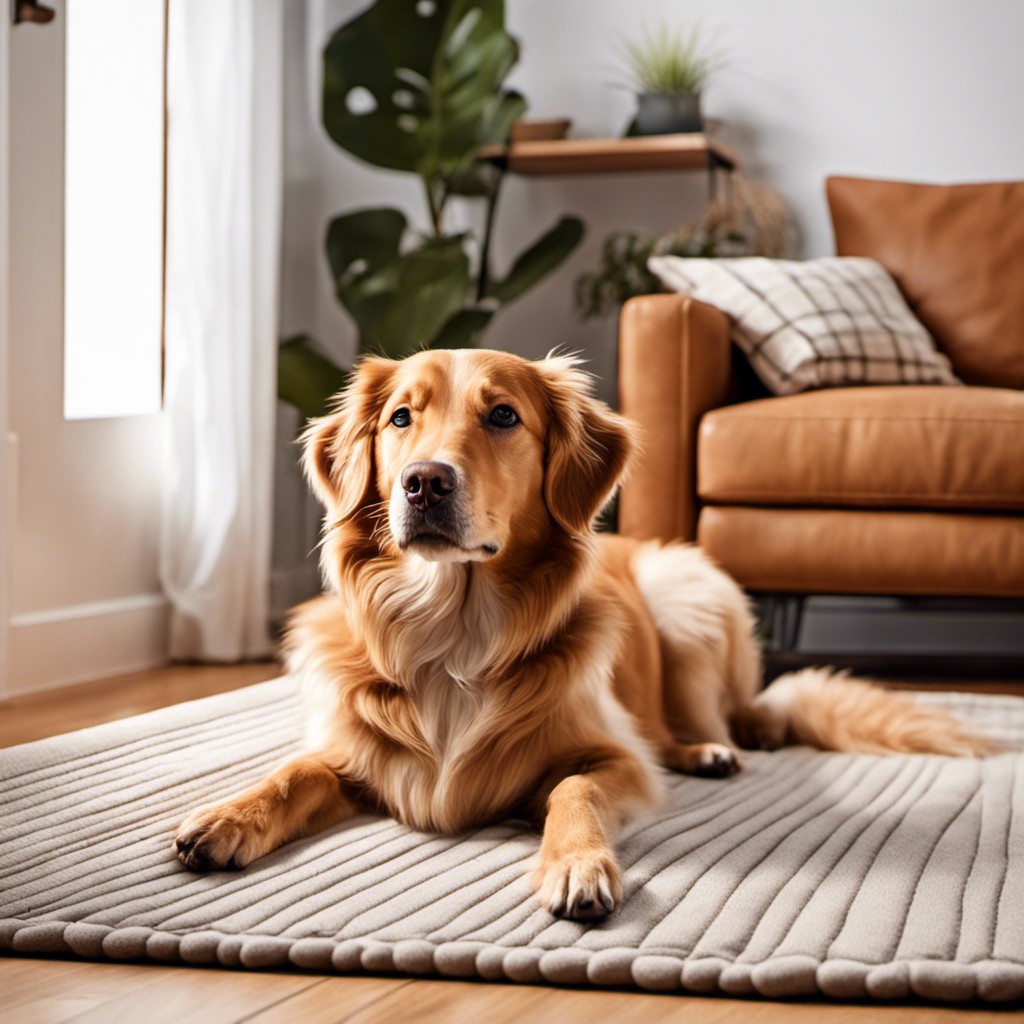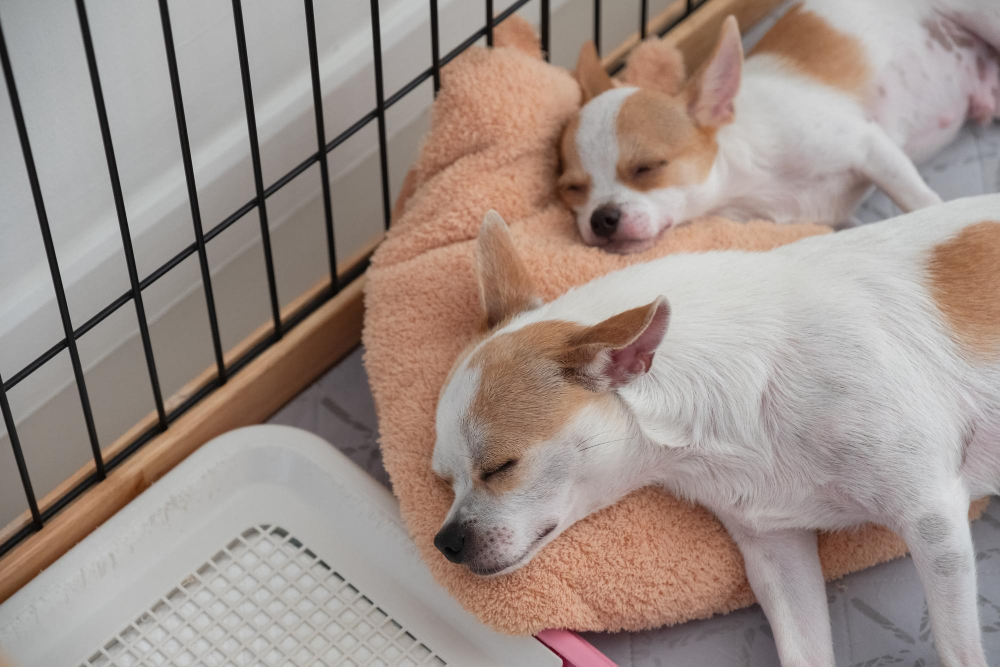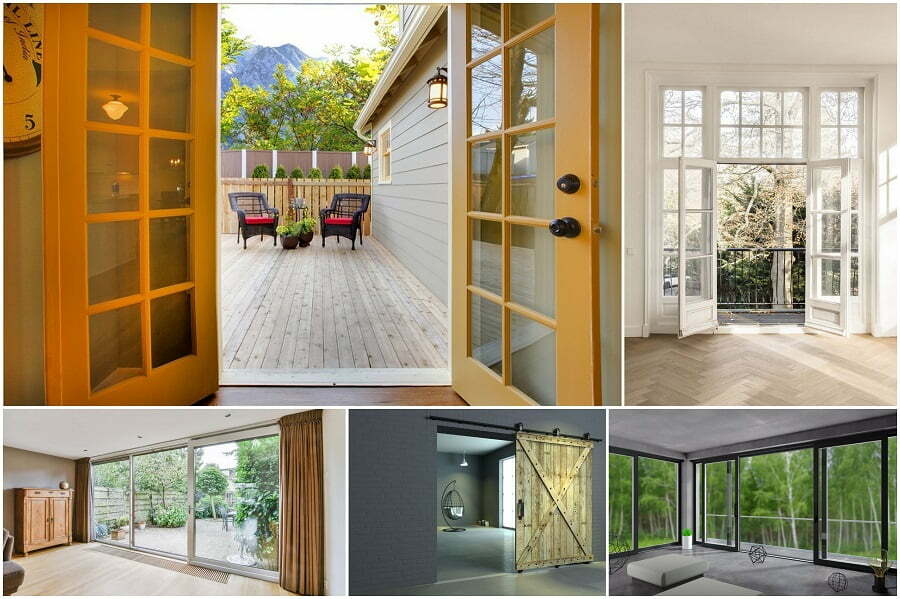Last updated on
Explore various doggie door alternatives that provide convenience and security for both you and your furry friend without compromising your home’s aesthetics.
As pet owners, we all love our furry companions and want them to feel comfortable in our homes. However, the traditional doggie door can be an eyesore and a security risk.
Plus, not everyone wants to cut a hole in their door or wall! The good news is there are plenty of alternatives that can keep your pup happy without sacrificing style or safety. In this article, we’ll explore some creative doggie door alternatives that will make both you and your furry friend happy.
So let’s dive in!
Magnetic Dog Doors
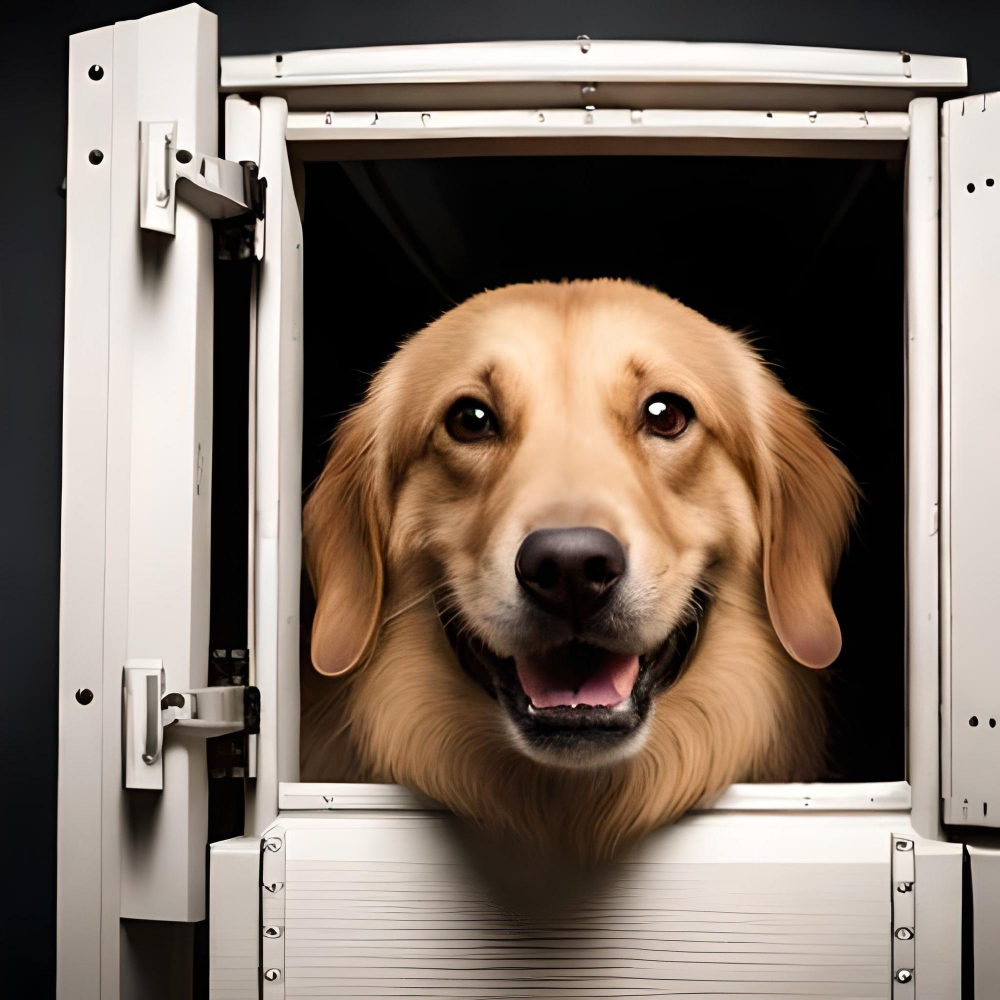
Magnetic Dog Doors are a great alternative to traditional doggie doors. They work by using magnets to keep the door closed when not in use, which helps prevent drafts and keeps unwanted animals out of your home.
When your furry friend wants to go outside, they simply push through the flap with their nose or paw, and the magnet releases so they can pass through.
One of the benefits of magnetic dog doors is that they come in different sizes for various breeds. You can choose from small-sized flaps for toy dogs or larger ones for bigger breeds like Great Danes or Mastiffs.
Another advantage is that these types of doors are easy to install and require no electricity or batteries. They’re also relatively affordable compared to other electronic options on this list.
However, one downside is that magnetic dog doors may not be as secure as some other alternatives since there’s no locking mechanism involved. If you live in an area with high crime rates or have concerns about intruders entering your home via pet entrances, then you might want to consider another option such as RFID-activated doggie doors instead.
Electronic Dog Doors
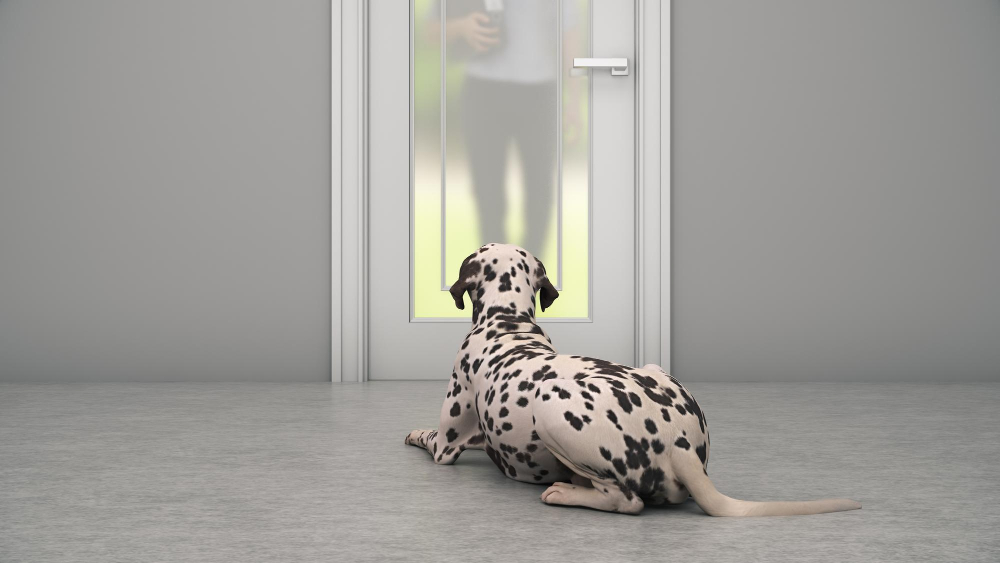
They provide convenience and security for both you and your furry friend. Electronic dog doors come in different types, including magnetic, RFID-activated, and electronic smart door options.
Magnetic electronic dog doors use magnets on the collar of your pet to activate the door when they approach it. This type of door is ideal for pets that like to roam around outside but need access back into their home.
RFID-activated electronic doggie doors work by using radio frequency identification technology that reads a microchip implanted in your pet’s collar or skin tag as they approach the entrance. These types of entrances are more secure than magnetic ones because only pets with an authorized chip can enter through them.
The PetSafe Electronic SmartDoor is another popular option among homeowners who want an easy-to-use solution without compromising safety or style. It uses programmable settings that allow you to control which animals have access at specific times while keeping unwanted visitors out.
RFID-Activated Doggie Doors
These doors use radio frequency identification (RFID) technology to detect when your dog is nearby and unlock the door automatically, ensuring that only your pet can enter or exit.
One of the best things about RFID-activated doggie doors is that they come in a variety of sizes and styles, so you can choose one that fits both your home’s decor and your pet’s needs. Some models even allow you to program multiple pets’ collars into the system, making it easy for all of them to come and go as they please.
Another advantage of RFID-activated doggie doors is that they provide an added layer of security by preventing other animals from entering your home. This feature also helps prevent unwanted pests like raccoons or squirrels from getting inside.
PetSafe Electronic SmartDoor
This door uses radio frequency identification (RFID) technology to allow only your pet to enter or exit the house, keeping unwanted animals out. The system comes with a collar key that you attach to your dog’s collar, which triggers the door when they approach it.
One of the best features of this electronic doggie door is its customization options. You can program up to five different keys for multiple pets or even set specific times when each key will work.
This feature ensures that only authorized pets can use the door at any given time.
Another great thing about this smartdoor is its energy efficiency – it has an insulated flap and weather stripping around all edges, making sure no drafts come through while still allowing easy access for your furry friend.
Wall Tunnel By High Tech Pet Products
This tunnel is made of high-quality aluminum and can be easily installed between the interior and exterior walls of your home. It provides an air pocket that helps insulate your home, making it energy efficient.
One of the best things about this product is that it comes with an automatic deadbolt locking system, which ensures maximum security for you and your pet. The door flap itself has four-way access control settings, allowing you to choose whether or not you want your pet to enter or exit through the door.
Another advantage of using this type of doggie door alternative is its compatibility with various sizes and breeds. You can choose from small up to extra-large sizes depending on what suits best for your furry friend’s size.
Pet Patio Door By Ideal Pet Products
This door fits right into your existing sliding glass patio doors, making it perfect for renters or those who don’t want to make permanent changes to their home.
The Pet Patio Door comes in various sizes and can accommodate pets up to 90 pounds. It features a clear tempered safety glass panel with a sturdy aluminum frame that won’t rust or corrode over time.
The flap is made of durable vinyl material that will withstand heavy use from even the most active pups.
One thing we love about this product is its energy efficiency – it has an air pocket between two soft flaps on either side of the pet door which helps keep your home insulated against drafts and temperature changes.
Installation couldn’t be easier; simply slide the panel into place behind your sliding patio doors, adjust height for proper fit using built-in adjustable height panels (no tools required), then secure with included screws at top and bottom tracks!.
Autoslide Canine Dog Door
This electronic dog door system uses motion sensors that detect when your pup is approaching, triggering the door to open automatically. The Autoslide Canine Dog Door can be installed in any sliding glass or patio door, making it an ideal option for those who don’t want to cut holes in their walls or doors.
One of the best things about this doggie door alternative is its customizable settings. You can adjust how long the door stays open after your pet has passed through it and set different modes depending on whether you’re home or away.
Another great feature of this product is its safety sensors that prevent accidents from happening by detecting if there’s anything blocking the doorway before closing shut again.
PetSafe Mesh Door
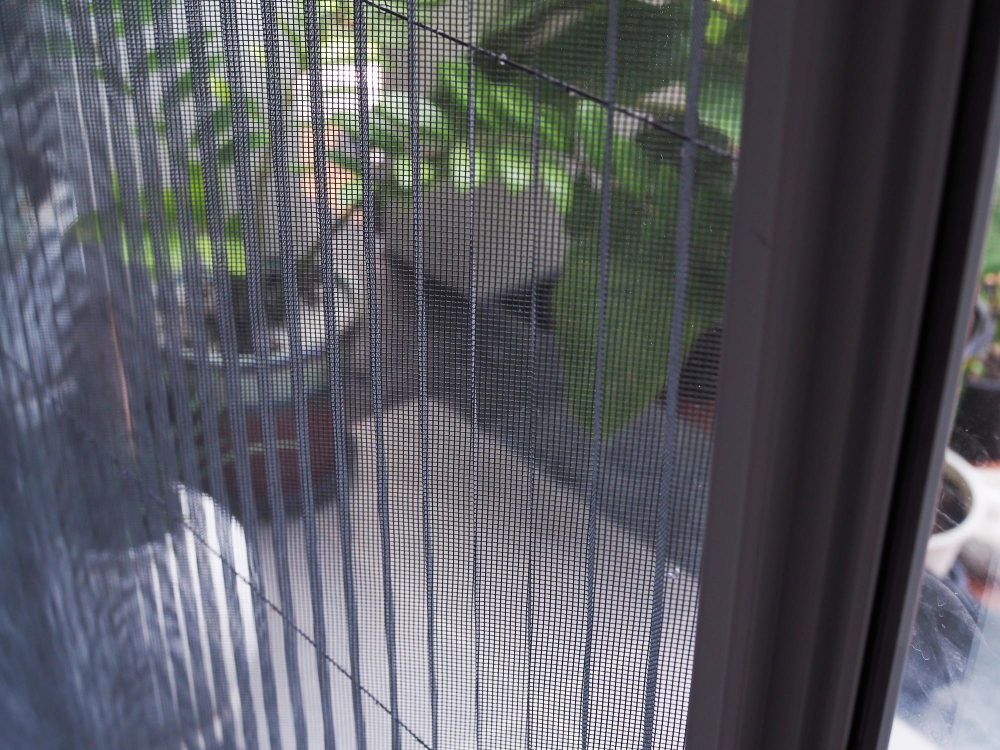
This mesh screen door has a built-in pet flap that allows your furry friend to come and go as they please without letting in bugs or other critters.
The PetSafe Mesh Door is easy to install, fits most standard doors, and comes in various sizes to accommodate different breeds of dogs. It’s also lightweight and portable so you can take it with you when traveling or visiting friends.
One thing to keep in mind with this type of doggie door alternative is security. While the mesh screen does provide some protection against intruders, it’s not as secure as other options like electronic doors or lockable latches.
If security is a concern for you, consider pairing the PetSafe Mesh Door with another layer of protection such as an indoor baby gate.
Magnetic Mesh Doors
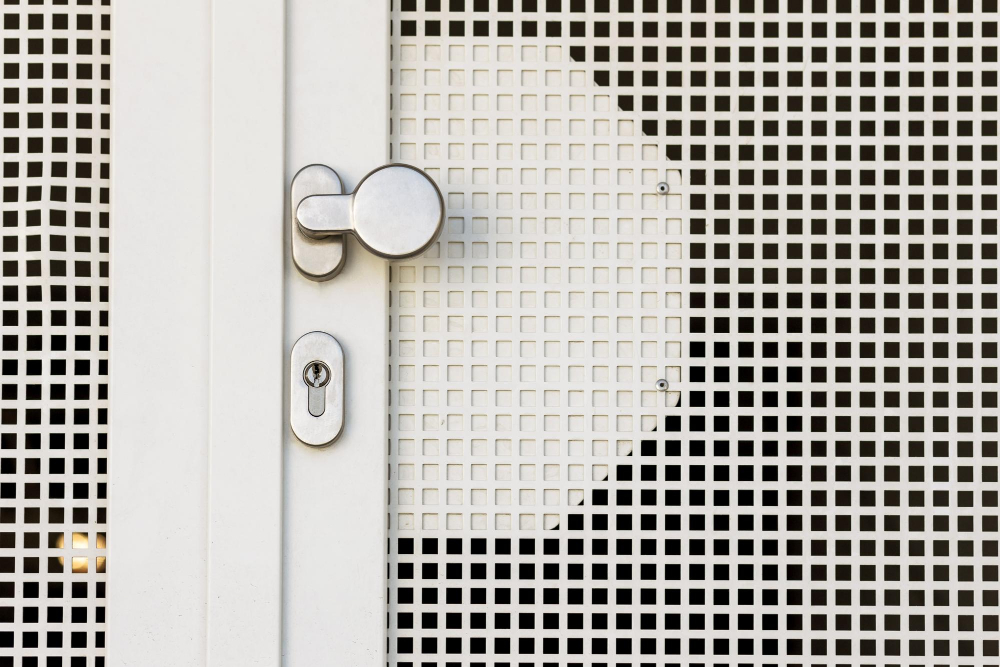
They’re easy to install and provide your furry friend with the freedom they crave while keeping unwanted pests out of your home. These doors use magnets to keep the mesh flap closed, making it easy for your pet to push through when they want in or out.
One of the benefits of magnetic mesh doors is that they come in different sizes, so you can find one that fits perfectly for any size dog. Plus, these types of doors are affordable and don’t require any special installation skills or tools.
However, there are some downsides as well. Magnetic mesh doors may not be suitable if you live in an area with extreme weather conditions such as heavy rain or snowfall since water can seep through them easily.
Patio Panel Doors

These doors come in a variety of sizes and styles, making them perfect for any home. They’re also incredibly easy to install, so you won’t need professional help.
One great example is the PetSafe Freedom Aluminum Patio Panel Sliding Glass Dog and Cat Door. This door fits into your existing sliding glass door track and can be easily installed with just a few tools.
Another popular option is Ideal Pet Products’ Fast Fit Aluminum Patio Door. It’s designed specifically for aluminum sliding patio doors, making it an ideal choice if you have this type of door in your home.
Patio panel doors offer many benefits over traditional doggie doors: they don’t require cutting holes in walls or doors; they provide better insulation against drafts; they’re more secure than flap-style doggie doors; and most importantly – they look great!.
When choosing a patio panel door, make sure you measure your pet carefully so that you get the right size opening.
Lockable Latches
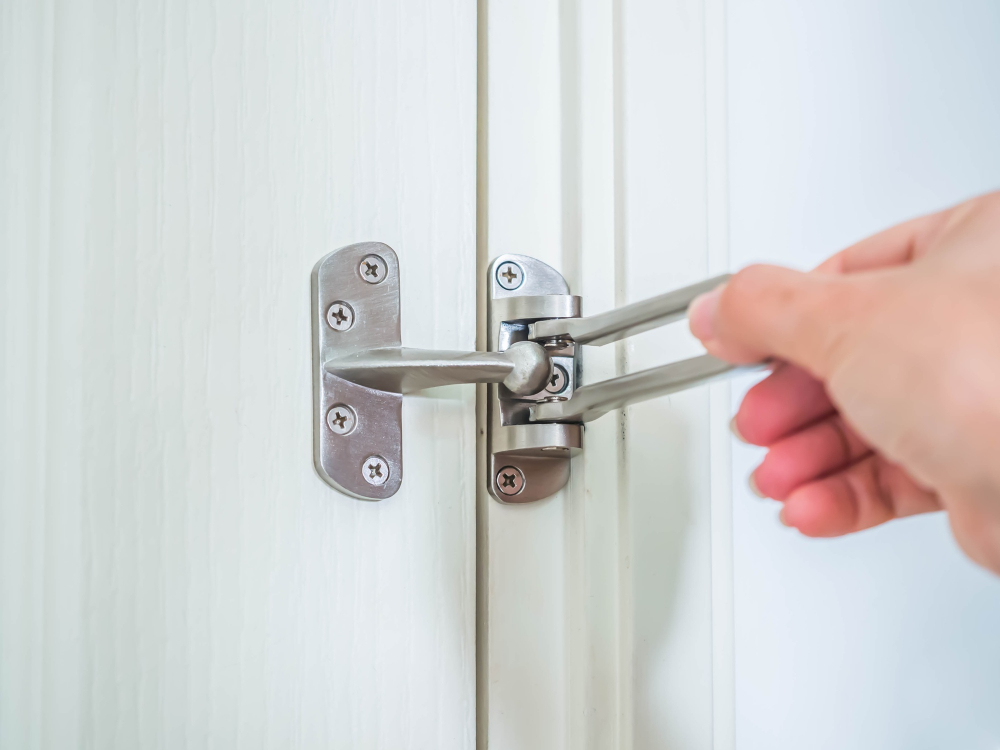
These latches can be installed on any door or window, allowing your dog to come and go as they please without compromising your home’s security.
One of the benefits of lockable latches is that they give you complete control over when your dog can enter or exit. This is especially useful if you have a particularly curious pup who likes to wander off into unknown territory.
Another advantage of lockable latches is that they are relatively affordable compared to other doggie door alternatives. They also require minimal installation effort, making them an excellent choice for DIY enthusiasts.
However, it’s important not to overlook safety concerns when using lockable latches. Make sure that the latch mechanism is sturdy enough so that it cannot be easily tampered with by intruders or mischievous pets looking for adventure outside their designated area.
PetLatch™
This innovative product allows you to lock or unlock the latch from either side of the door, giving you complete control over when your pet can come in or go out.
Unlike traditional doggie doors, PetLatch™ doesn’t require any cutting into walls or doors. It’s easy to install on any standard interior or exterior door with just a few screws.
Plus, it’s made of durable materials that will withstand even the most active pets.
One of the best things about PetLatch™ is its affordability compared to other high-tech alternatives like electronic dog doors. It also eliminates concerns about unwanted animals entering through an open flap while still allowing your pet access whenever they need it.
DIY Doggie Door Alternatives
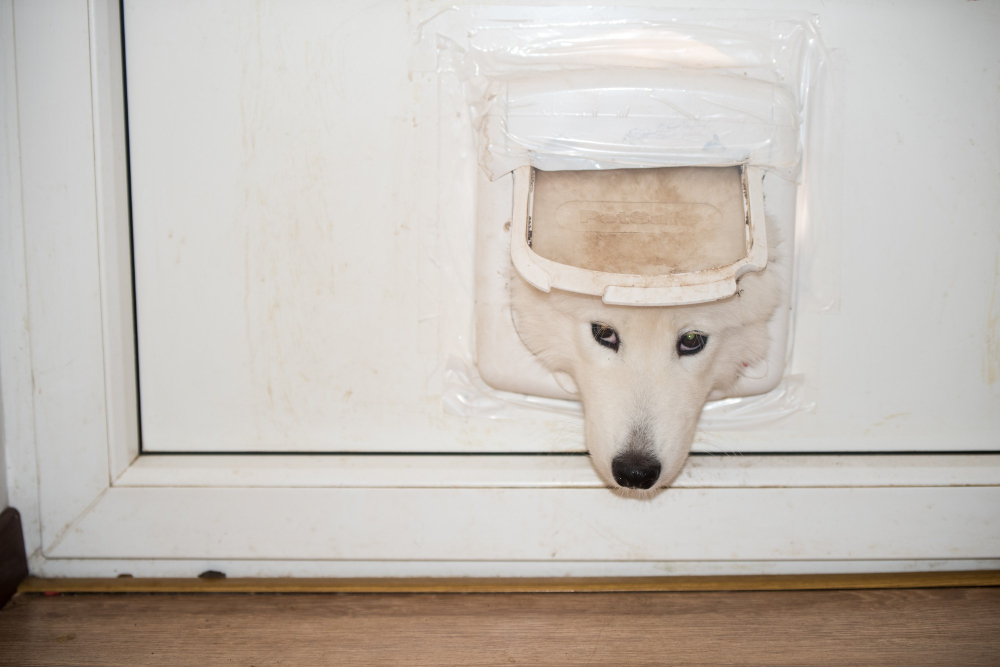
One popular option is to use flaps made from durable materials like vinyl or rubber and attach them to your existing doors or walls. You can also make a screen door with pet-friendly mesh material that allows your furry friend easy access in and out of the house.
Another creative idea is to repurpose an old cabinet or dresser by cutting out a section for your pup’s entrance. This not only provides easy access but also adds some unique charm to your home decor.
However, it’s important to keep in mind that DIY projects require careful planning and execution, especially when it comes to creating safe entryways for pets. Make sure the materials used are sturdy enough for repeated use by larger dogs without breaking down quickly.
Flaps
They come in various sizes and materials, including vinyl, rubber, or plastic. Flaps can be installed on any door or wall and provide easy access for your furry friend while keeping unwanted pests out of your home.
One of the benefits of using flaps is that they are affordable compared to other alternatives like electronic dog doors. They require minimal installation effort and can be easily replaced if damaged.
However, one downside to flaps is that they may not offer as much security as other options since some determined animals could push through them with enough force. Also, depending on the material used for the flap’s construction it might wear down over time due to weather conditions or frequent use by pets.
Screens
They come in different sizes and shapes, making them a versatile option for any home. Screens allow fresh air to circulate throughout the house while keeping bugs and other unwanted pests out.
One of the benefits of using screens as a doggie door alternative is their affordability. Compared to electronic or magnetic doors, screens are much cheaper and require minimal installation effort.
However, they may not be suitable for all types of dogs since some breeds tend to scratch at screens which could cause damage over time.
If you have an energetic pup who loves spending time outdoors but also enjoys lounging inside with you on lazy afternoons, then installing a screen might just be the perfect solution! Just make sure that it’s sturdy enough to withstand your furry friend’s playful antics.
Windows
If you have a low window that your pup can easily access, consider installing a pet door insert. These inserts come in various sizes and styles and fit right into the track of your sliding window or patio door.
One popular option is the Ideal Pet Products Aluminum Sash Window Pet Door, which comes with an adjustable height range to fit most windows. Another option is the Endura Flap Thermo Panel IIIe Dog Door for Sliding Glass Doors, which provides excellent insulation against extreme temperatures.
If you’re worried about security or live in an area with high foot traffic, consider adding a lockable latch to prevent unwanted visitors from entering through your pet’s entrance.
Sliding Door Dog Panels
These panels fit into your existing sliding glass door frame and come in various sizes, making them suitable for dogs of all breeds and sizes.
One of the benefits of using sliding door dog panels is that they don’t require any cutting or drilling into your walls or doors. They’re also easy to install, so you won’t need professional help unless you have trouble with DIY projects.
Another advantage is that these panels can be removed easily when not in use, which means no permanent changes will be made to your home’s structure. Plus, most models come with lockable latches that provide an extra layer of security against intruders while keeping your pup safe inside.
However, it’s important to note that some sliding door dog panel models may not work well if you have a multi-panel slider because they take up space on one side only. If you live in an area with extreme weather conditions like heavy rainstorms or snowfall during winter months – this type might not be ideal as it could let drafts through causing discomfort for both pets and humans alike.
PlexiDor Performance Pet Doors
These doors feature a durable, shatter-resistant panel that can withstand even the most rambunctious pets. The panels also come in various sizes, making it easy to find one that fits your dog’s size and breed.
One of the best things about PlexiDor Performance Pet Doors is their energy efficiency. They have an insulated flap that helps keep your home warm in winter and cool in summer while still allowing your pet free access outside.
Another advantage of these doors is their ease of installation. They come with everything you need for quick and straightforward setup, including detailed instructions and all necessary hardware.
Security Barrier Dog Doors
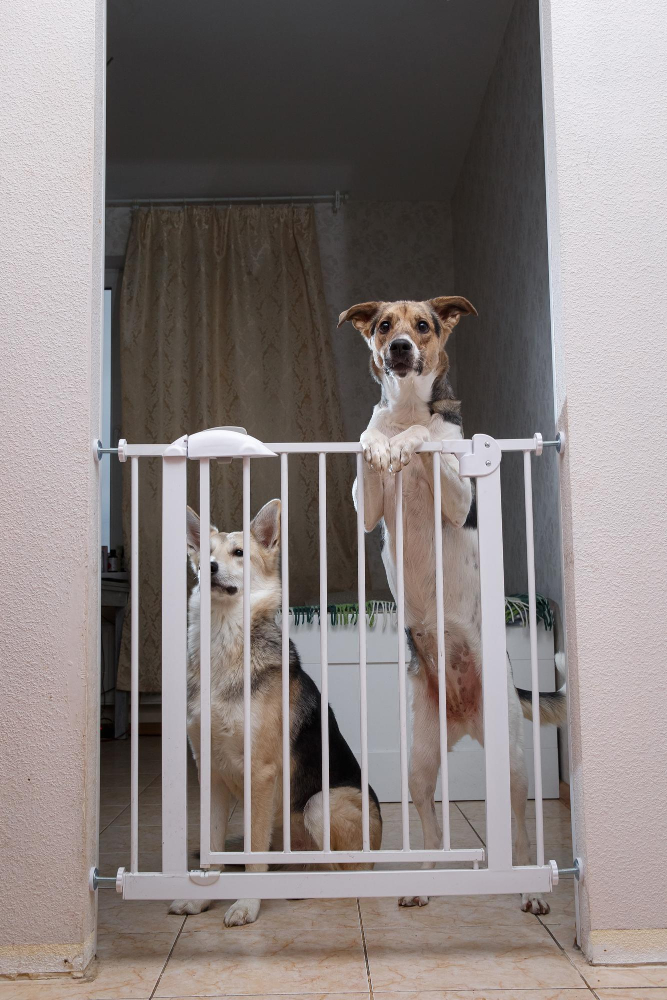
These doors feature a locking mechanism that prevents unwanted animals or intruders from entering your home, making them an excellent choice for those concerned about security.
One popular type of security barrier dog door is the Endura Flap Pet Door. This door features dual-pane, insulated glass that provides superior energy efficiency and noise reduction.
The flap itself is made of flexible PVC material that won’t warp or crack over time, ensuring long-lasting durability.
Another option is the Hale Pet Door Security Barrier. This door features a sturdy aluminum frame and comes in several sizes to accommodate dogs of all breeds and sizes.
It also has a locking cover that can be easily removed when you want your pet to have access but securely locked when you need extra protection.
When considering installing any type of doggie door alternative in your home, it’s important to think about both convenience and safety factors such as location within your house (avoiding easy access from outside), size appropriate for pets’ needs (too small may cause injury), affordability (some options can be expensive) among others.
Invisible Fencing Solutions
These systems use an underground wire that emits a signal, which is picked up by your dog’s collar. When your pup gets too close to the boundary line, they receive a warning beep followed by static correction if they continue towards it.
While invisible fences can be effective in keeping dogs contained within certain areas of your yard, there are some things you should consider before installing one. For example, these systems may not work well with all breeds and temperaments of dogs and can cause anxiety or aggression in some pets.
Invisible fences do not keep other animals out of your yard and may not prevent theft or harm from strangers who enter uninvited. It’s important to weigh the pros and cons carefully before deciding whether an invisible fence is right for you and your pet.
Outdoor Kennels and Runs
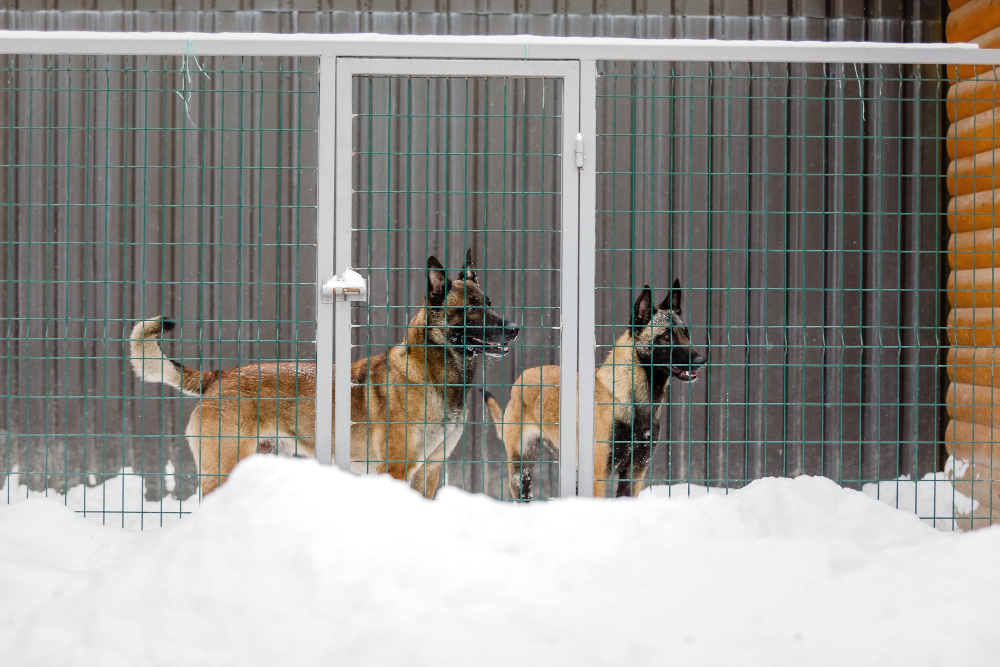
These kennels come in various sizes, materials, and designs that can fit any budget or style preference. They provide your dog with plenty of room to run around, play fetch or just relax in the sun.
One of the biggest advantages of an outdoor kennel is that it keeps your dog contained within a designated area. This means you don’t have to worry about them running off into traffic or getting lost when they’re outside alone.
Another benefit is that these enclosures can be customized according to your needs and preferences. You can choose from different types of fencing material such as chain link, wood panels or welded wire mesh depending on what suits you best.
Dog-Friendly Home Design
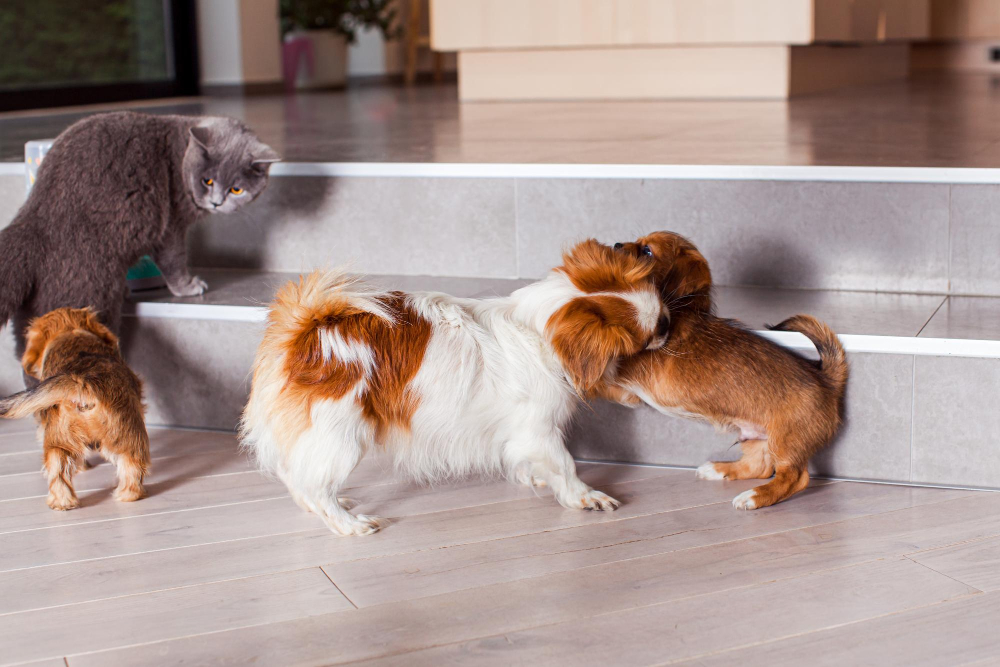
First, think about the materials you use in your decor. Opt for durable fabrics like leather or microfiber that can withstand scratches and stains from pets’ paws.
Next, consider the layout of your space. If you have a larger dog who loves to run around indoors, make sure there’s plenty of room for them to move freely without knocking over furniture or decorations.
Another important factor is storage – having designated spaces for toys and treats will help keep clutter at bay while also making it easier for you to find what you need when taking care of your furry friend.
Don’t forget about safety! Make sure any hazardous items (like cleaning supplies) are stored out of reach from curious pups. And if you’re considering adding a doggie door alternative into your home design plan – be mindful not only where it should go but also how secure it needs to be so as not compromise on security measures already in place.
Baby Gate for Pet Control
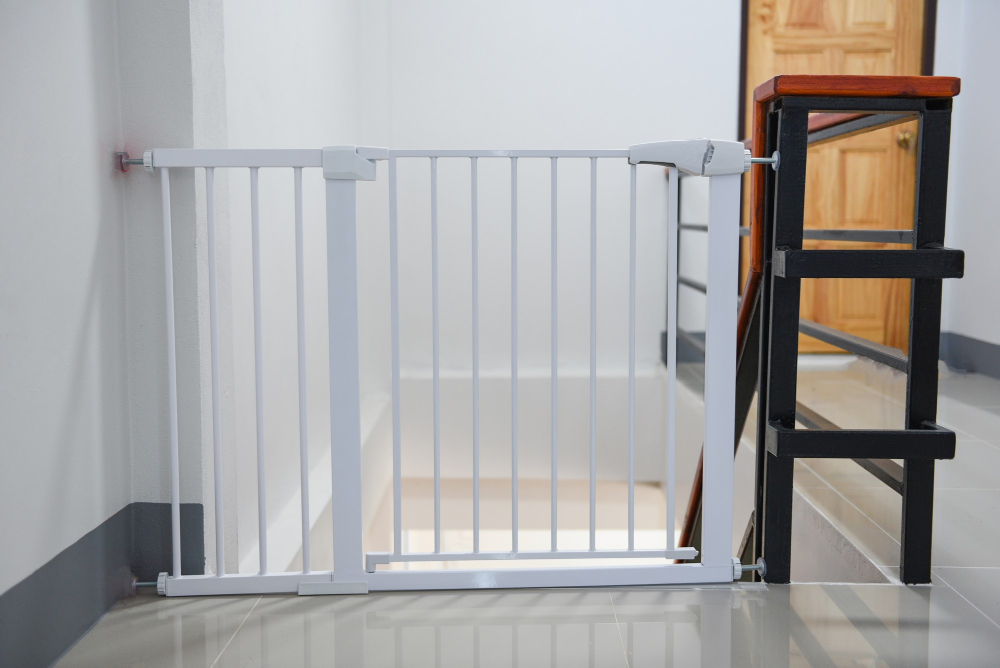
Fortunately, there is an alternative that can keep both your child and pet safe: the baby gate. Baby gates are designed to block off certain areas of your home and prevent children from accessing them.
They can also be used as a barrier for pets.
When choosing a baby gate for pet control, look for one with sturdy construction and vertical bars that will prevent larger dogs from jumping over it. Some gates even come with built-in doors or small openings specifically designed for pets.
It’s important to note that while baby gates are effective at keeping pets contained in certain areas of the house, they should not be relied upon as the sole method of containment if you have an escape artist on your hands! Always supervise your pet when they’re behind any type of barrier.
Indoors Vs. Outdoors: Pros and Cons

There are pros and cons to both options.
Indoors: If you live in an apartment or have limited outdoor space, an indoor doggie door can provide your pup with more freedom of movement. It also eliminates the need for potty breaks during inclement weather conditions.
However, if you don’t train your pet properly on how and when to use their new access point, they may become confused about where they should relieve themselves. This could lead to accidents throughout the house.
Outdoors: An outdoor doggie door provides easy access for pets who love spending time outdoors without having someone constantly opening doors for them. They can come and go as they please while still being able to enjoy fresh air and exercise whenever they want.
On the downside, there’s always a risk that other animals might enter through this open portal into your home uninvited – from squirrels all the way up through larger predators like coyotes! extreme temperatures (hot or cold) may make it uncomfortable for dogs waiting outside before coming back in again via their new entranceway.
Training Your Dog for Door Alternatives
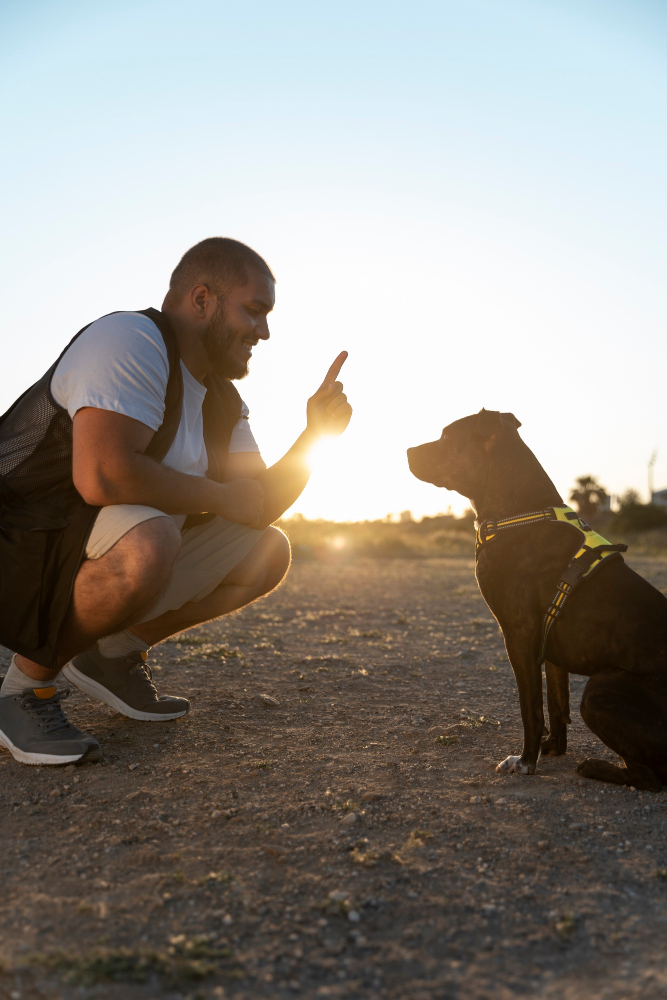
If your furry friend is hesitant to use the new door alternative, it’s important to train them properly. Start by introducing them slowly and positively reinforcing their behavior with treats or praise when they successfully use the new door.
It may take some time and patience on your part, but eventually, your pup will get used to using the alternative doggie door without any issues. Remember that every pet is different and may require different training methods.
Make sure you consider safety concerns when choosing an alternative doggie door option. Some electronic doors have sensors that can detect if another animal tries to enter while others have lockable latches that prevent unwanted entry.
Health and Safety Concerns

One of the biggest risks is allowing other animals or pests into your home through an open door. This could lead to fights between pets or even infestations of unwanted critters.
Another concern is ensuring that your pet stays safe while using the door. If you have a larger dog, they may need more space than what some smaller doors provide, which could result in injuries if they try to squeeze through too quickly.
It’s also essential to keep up with regular maintenance on any electronic or magnetic doors as malfunctioning parts can pose hazards for both pets and humans alike.
When considering installing a doggie door alternative in your home, make sure you weigh all potential health and safety risks before making any decisions.
Doggie Door Installation Considerations
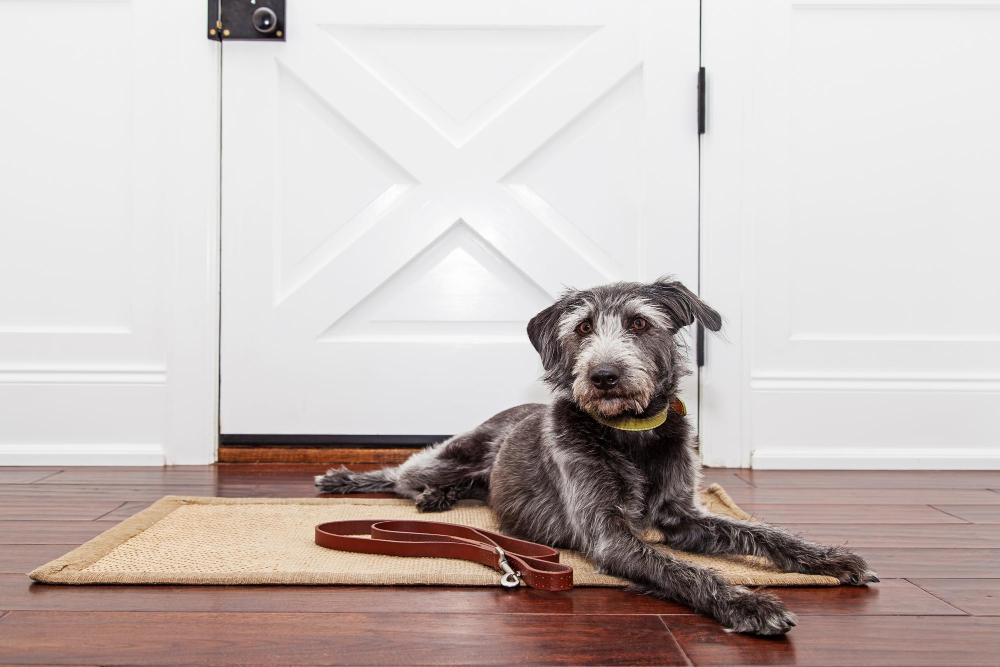
First and foremost is the size of your furry friend. You want to make sure that the opening is large enough for them to comfortably pass through without getting stuck or injured.
Another important consideration is where in your home you plan on installing the doggie door. If you have a fenced-in yard, then an outdoor installation may be ideal.
However, if you live in an apartment or condo with no direct access outside, then an indoor installation may be necessary.
Security should also be taken into account when choosing a location for your pet’s entrance/exit point as well as what type of locking mechanism will work best for keeping unwanted visitors out while still allowing easy access for Fido.
Size of Dog

You want to make sure that the opening is large enough for them to comfortably pass through without getting stuck or injured. You don’t want an overly large opening that could allow unwanted animals or intruders into your home.
Before purchasing any type of doggie door alternative, measure your pet from their shoulders down to their feet and add a few inches for clearance. This will give you an idea of what size opening you need in order for them to easily come and go as they please.
It’s also worth noting that some alternatives may have adjustable sizes or multiple options available depending on the breed and weight of your pet. Be sure to read product descriptions carefully before making a purchase so that you can choose one with appropriate sizing options.
Location in Your Home
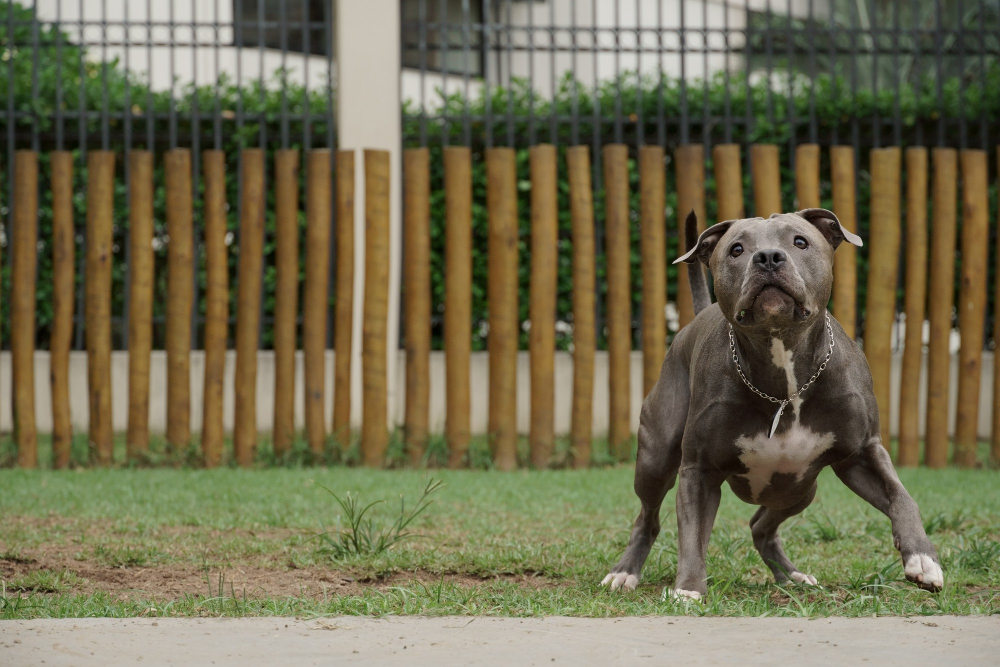
You want to choose a spot that’s convenient for both you and your furry friend while also ensuring it doesn’t compromise the security of your home.
If you have a fenced-in backyard, installing a doggie door on an exterior wall or backdoor can be ideal. This allows easy access for your pup to go outside and play without having to rely on you constantly opening and closing doors.
However, if you live in an apartment or don’t have direct access from inside the house to outside space, then installing one near windows could be another option. A sliding glass patio panel with built-in pet doors is perfect for this situation as it provides easy installation without compromising security.
Another thing worth considering when choosing where to install your doggie door alternative is how much traffic goes through that area of the house. If there are children running around or other pets who might try escaping through it too – then perhaps placing it higher up would be best so only dogs can use them comfortably!
Affordability

Fortunately, there are plenty of options available that won’t break the bank. DIY alternatives such as flaps, screens or windows can be cost-effective and easy to install with basic tools and materials from your local hardware store.
If you’re looking for something more advanced like an electronic or magnetic doggie door, prices can vary depending on features such as size, security level and installation requirements. However, it’s important not to compromise quality over price when it comes to keeping your furry friend safe.
Security
Traditional dog doors can be an easy entry point for burglars or other unwanted guests, but there are alternatives that offer added security features. Electronic and RFID-activated doggie doors only open when your pet’s collar is within range, preventing any unauthorized access from outside.
Another option is the Autoslide Canine Door, which uses motion sensors to detect your pet’s presence and opens automatically. This type of door also has adjustable settings so you can control how long it stays open before closing again.
For those who prefer more traditional options like flaps or screens, lockable latches provide an extra layer of security by allowing you to lock the door at night or while you’re away from home.
When considering which alternative works best for your home and lifestyle needs, always prioritize safety first.
Classic Doggie Door
These doors are typically made of plastic or metal, with a flap that swings open when your dog pushes through it. While they may not be the most stylish option, classic doggie doors get the job done without breaking the bank.
However, there are some downsides to consider before installing one in your home. Classic doggie doors can compromise security by allowing unwanted animals or intruders into your home.
They also let in drafts during colder months which can increase energy bills.
Benefits

However, traditional doggie doors can be unsightly and may not fit with your home’s decor. That’s where alternative doggie door options come in! Not only do these alternatives provide convenience for both you and your pet, but they also offer several benefits that make them worth considering.
For starters, electronic or magnetic doggie doors can help keep unwanted animals out of your home while allowing only authorized pets to enter. This is especially important if you live in an area with wildlife or stray animals that could pose a threat to your pet.
Another benefit of using alternative doggy door options is improved energy efficiency. Traditional flap-style doors allow air drafts into the house which increases heating/cooling costs; however, some modern designs have insulated flaps that prevent heat loss during winter months.
Lastly, many homeowners appreciate how these alternatives blend seamlessly into their homes’ design without compromising aesthetics – making it easier than ever before for dogs (and cats) alike access points throughout their living spaces!.
Features
One important feature is the size of the door. You want to make sure that your furry friend can easily fit through without getting stuck or injured.
Another crucial aspect is security; you don’t want any unwanted visitors entering through the pet entrance! Look for doors with lockable latches and other safety features.
Some doggie doors come equipped with electronic sensors or RFID technology that only allows access to pets wearing a special collar tag. This ensures no stray animals enter your home while keeping yours safe inside.
Another feature worth considering is energy efficiency – look for insulated flaps and panels designed to keep out drafts during colder months.
Think about installation requirements when choosing an alternative doggy door option – some require professional installation while others can be installed by homeowners themselves in just a few hours!.
Problems With Doggy Doors
For one, they can be an easy entry point for burglars or other unwanted guests. Some dogs may not feel comfortable using them and may need to be trained to do so.
Another issue is that doggy doors can let in pests like rodents or insects if not properly sealed. They also allow outdoor air into your home which could affect your energy bills.
Lastly, traditional doggy doors don’t always look great on the exterior of your home and can detract from its overall aesthetic appeal.
Fortunately, there are many alternatives available that address these issues while still providing convenience for you and comfort for your furry friend.
Types of Doggy Door Alternatives
Some of the most popular types include electronic doors, magnetic doors, and RFID-activated doors. Electronic doggie doors use sensors that detect your pet’s collar or microchip to allow them access in and out of your home while keeping unwanted animals out.
Magnetic doggie doors work similarly but use magnets instead of sensors.
RFID-activated doggie doors require a special tag on your pet’s collar that triggers the door to open when they approach it. These types of alternative solutions provide an added layer of security for you and your furry friend.
Other options include wall tunnels by High Tech Pet Products or patio panel dogs by Ideal Pet Products which can be installed into existing walls or sliding glass patio panels respectively without compromising aesthetics.
For those who prefer DIY projects, there are plenty of creative ways to create a custom-made solution such as using flaps for screens or windows with lockable latches like PetLatch™.
7 Best Doggy Door Alternatives
Here are seven of our top picks:.
1. Magnetic Dog Doors: These doors use magnets to keep the flap closed when not in use, preventing drafts and keeping out unwanted critters.
2. Electronic Dog Doors: With an electronic dog door, your pet wears a collar that triggers the door to open when they approach it.
3. RFID-Activated Doggie Doors: Similar to electronic doors but using radio frequency identification (RFID) technology instead of a collar.
4. PetSafe Electronic SmartDoor: This high-tech option allows only your pet access through its smart key system while keeping other animals out.
5. Wall Tunnel by High Tech Pet Products: A wall tunnel is perfect if you don’t want to cut into your existing walls or doors and provides extra insulation against weather conditions outside.
6.Pet Patio Door by Ideal Pet Products : If you have sliding glass patio doors this is an excellent alternative as it fits right into them without any modifications needed.
7.Autoslide Canine Door : The Autoslide Canine Door can be installed on most sliding patio or screen porch openings with ease making it one of our favorite options for those who love their pets but also value home security.
Doggy Door Alternatives – FAQs
Here are some frequently asked questions to help you make an informed decision:.
Q: Are electronic dog doors safe for my pet? A: Yes! Electronic dog doors come with safety features such as sensors that prevent the door from closing on your pet.
Q: Can I install a magnetic mesh door myself? A: Absolutely! Magnetic mesh doors are easy to install and require no special tools or skills.
Q: Will installing a patio panel damage my sliding glass door? A: No, most patio panels do not require any drilling or permanent modifications to your sliding glass door.
Q. What is the best type of alternative if I live in an apartment building? A.
If you live in an apartment building, consider using lockable latches or baby gates for pet control instead of traditional doggie doors which might violate lease agreements. These are just a few common questions about alternative options for traditional doggie doors.
Remember always to choose what works best for both you and your furry friend’s needs while keeping security concerns in mind when making this important decision.
FAQ
What can I use if I don’t have a doggy door?
If you don’t have a doggy door, you can use Patio Panel Doors, which fit onto the rails of your patio or sliding door and fix in place, without needing to replace the door or window.
Can you still use sliding door with dog door?
Yes, you can still use a sliding door with a dog door as they can be easily fitted into existing sliding glass doors with minimal modifications, making it a great option for renters.
Do people still use dog doors?
Answer: Yes, people still use dog doors, with options ranging from traditional door-mounted ones to wall-mounted variations for greater flexibility.
Is there a way to put a doggie door in a glass door?
Yes, a doggie door can be installed in a glass door by using a patio panel with a pre-installed pet door that fits into the sliding glass door track, requiring no tools and minimal installation time.
What are some effective dog door alternatives for apartment living?
Some effective dog door alternatives for apartment living include installing pet gates, using portable pet pens, or utilizing retractable dog leashes.
How can I train my dog to use a specific door alternative for going outside?
To train your dog to use a specific door alternative for going outside, consistently lead them to that door, reward them for successfully using it, and gradually reinforce the behavior through positive reinforcement.
Are there any temporary or removable dog door options for renters?
Yes, there are temporary or removable dog door options available for renters, ensuring convenience and easy installation.
Recap
Liked this article? Here's what you can read next:
